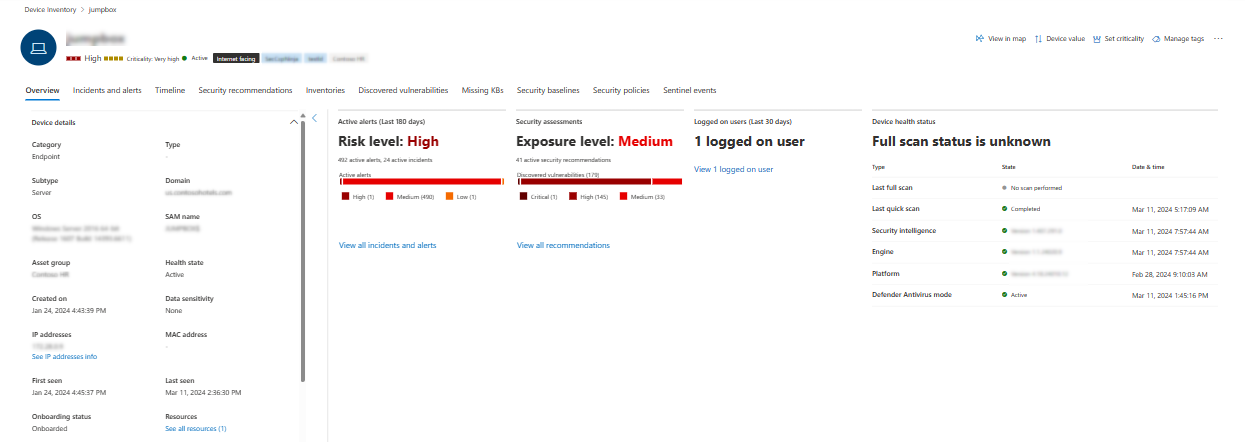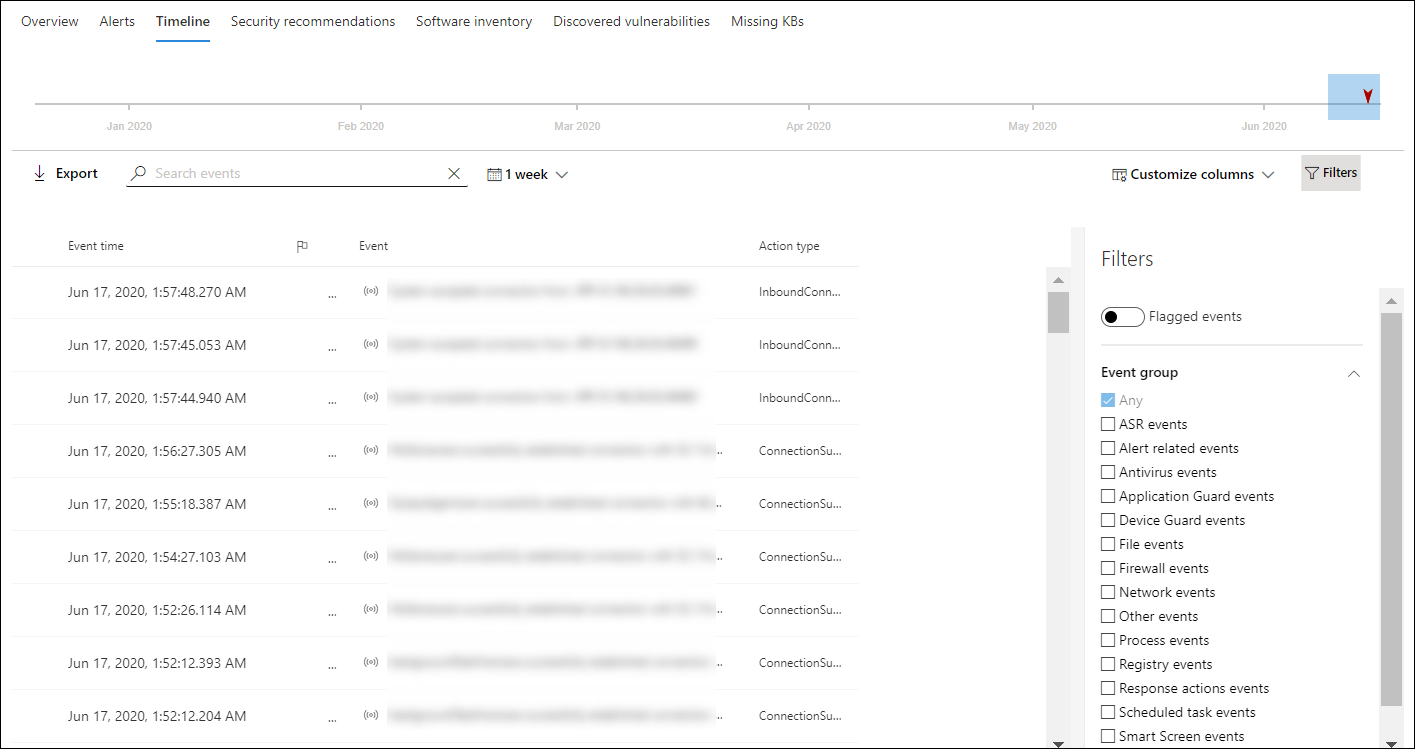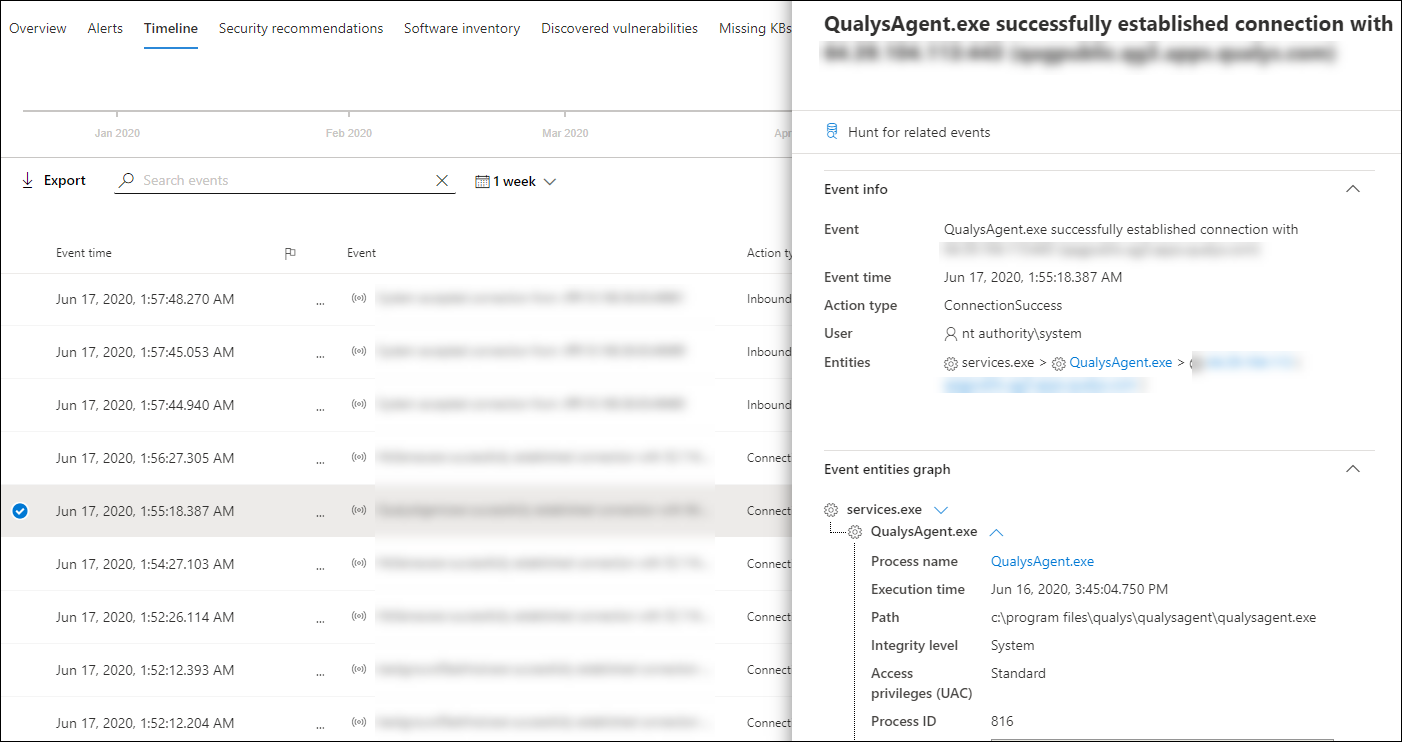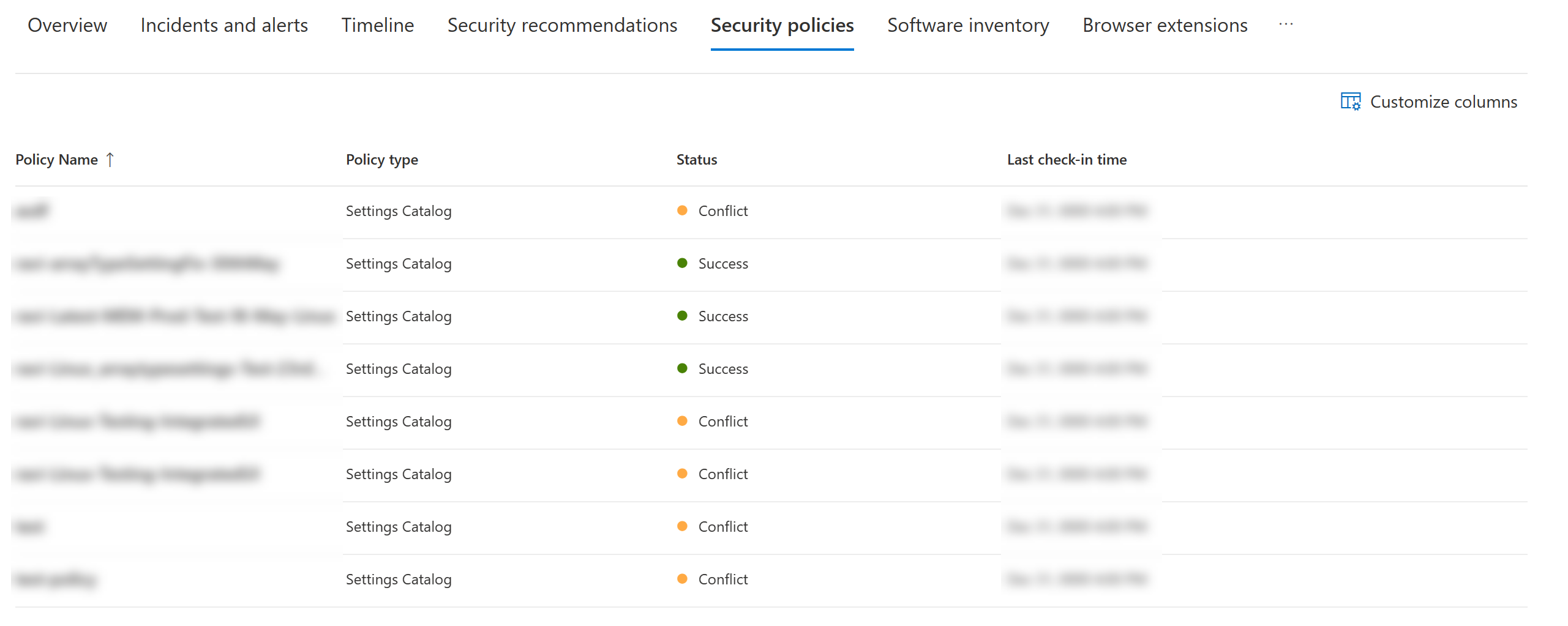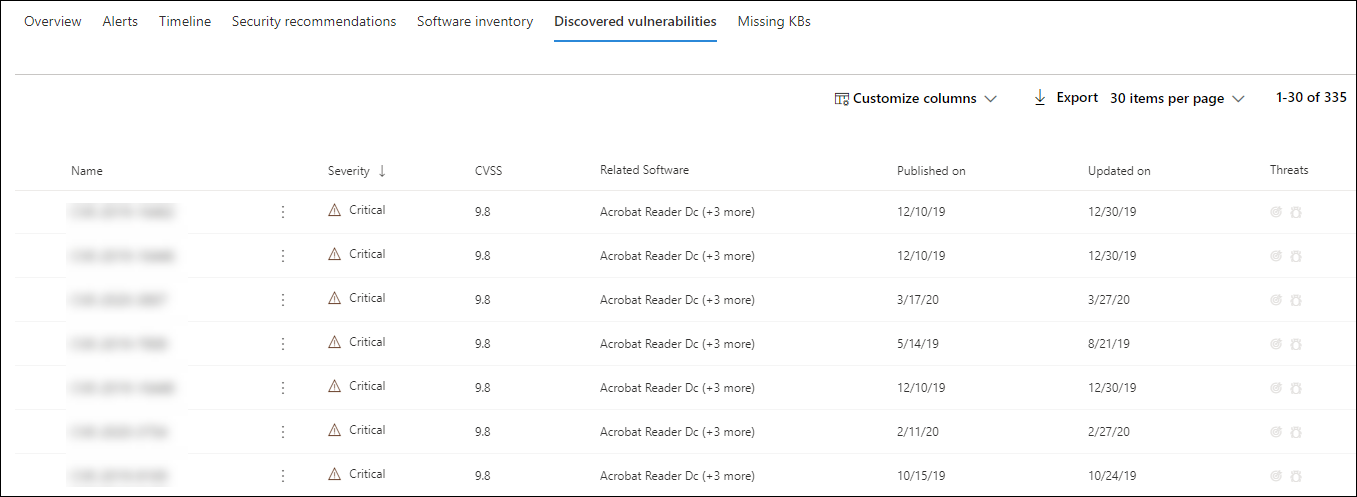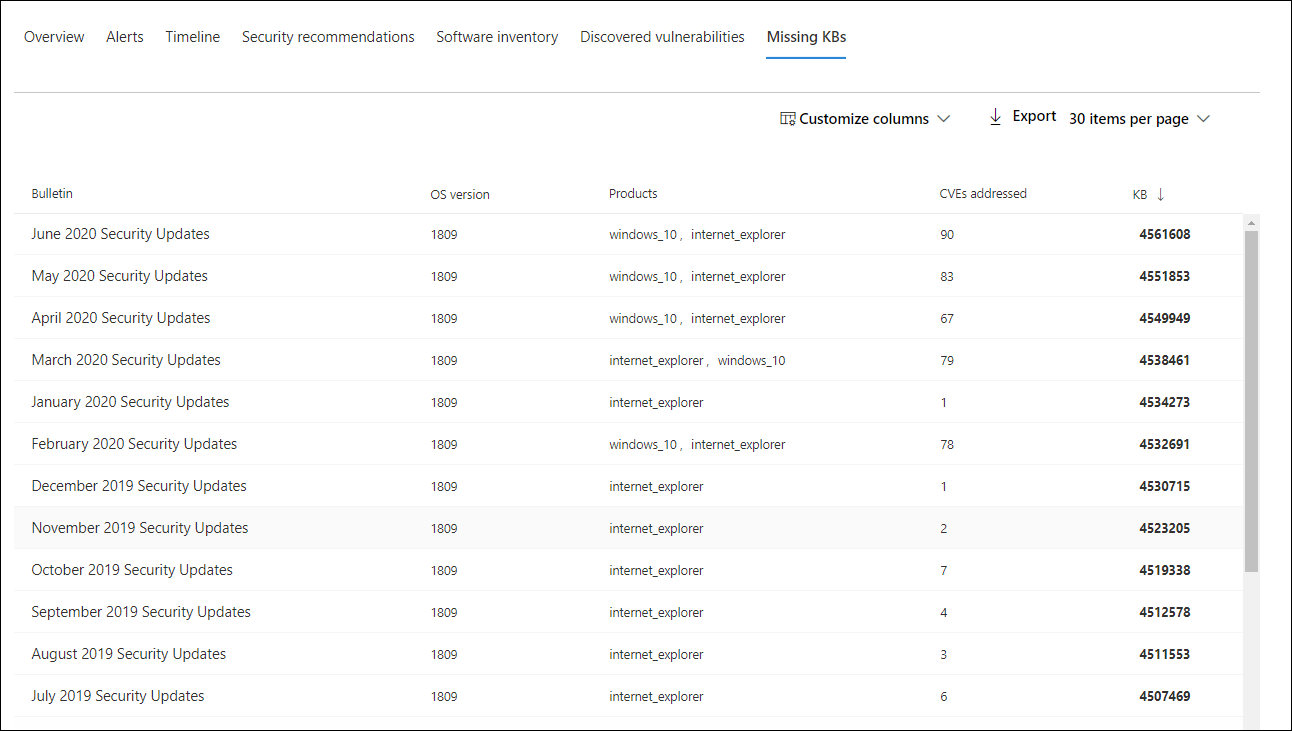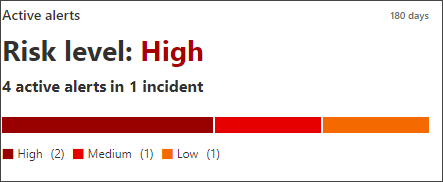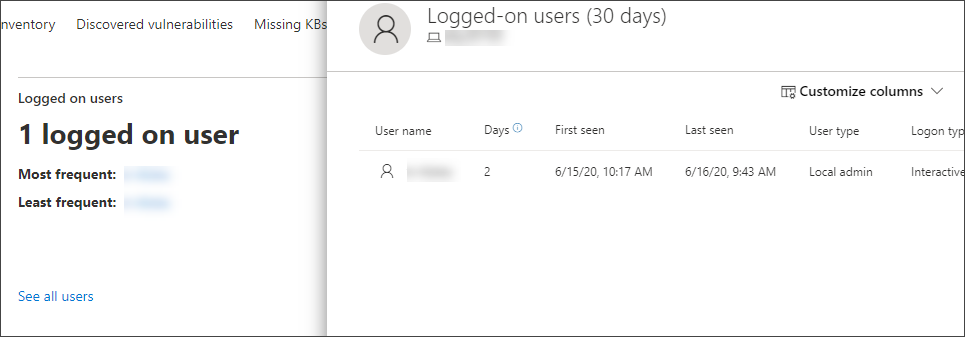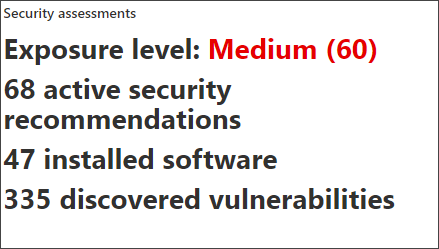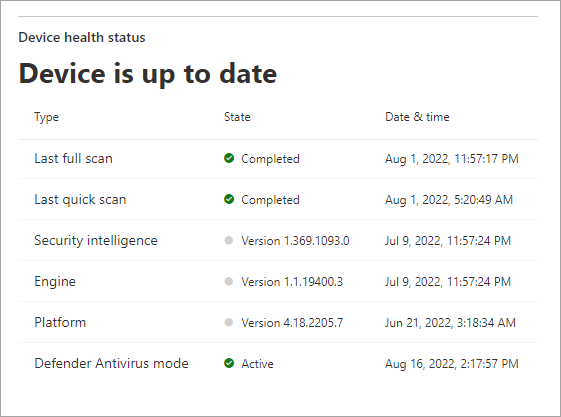Investigate devices in the Microsoft Defender for Endpoint Devices list
Applies to:
Want to experience Defender for Endpoint? Sign up for a free trial.
Investigate the details of an alert raised on a specific device to identify other behaviors or events that might be related to the alert or the potential scope of the breach.
Note
As part of the investigation or response process, you can collect an investigation package from a device. Here's how: Collect investigation package from devices.
You can select on affected devices whenever you see them in the portal to open a detailed report about that device. Affected devices are identified in the following areas:
- Devices list
- Alerts queue
- Any individual alert
- Any individual file details view
- Any IP address or domain details view
When you investigate a specific device, you see:
- Device details
- Response actions
- Tabs (overview, alerts, timeline, security recommendations, software inventory, discovered vulnerabilities, missing KBs)
- Cards (active alerts, logged on users, security assessment, device health status)
Note
Due to product constrains, the device profile does not consider all cyber evidence when determining the 'Last Seen' timeframe (as seen on the device page as well). For example, the 'Last seen' value in the Device page may show an older time frame even though more recent alerts or data is available in the machine's timeline.
Device details
The device details section provides information such as the domain, OS, and health state of the device. If there's an investigation package available on the device, you see a link that allows you to download the package.
Response actions
Response actions run along the top of a specific device page and include:
- View in map
- Device value
- Set criticality
- Manage tags
- Isolate device
- Restrict app execution
- Run antivirus scan
- Collect investigation package
- Initiate Live Response Session
- Initiate automated investigation
- Consult a threat expert
- Action center
You can take response actions in the Action center, in a specific device page, or in a specific file page.
For more information on how to take action on a device, see Take response action on a device.
For more information, see Investigate user entities.
Note
View in map and set criticality are features from Microsoft Exposure Management, which is currently in public preview.
Tabs
The tabs provide relevant security and threat prevention information related to the device. In each tab, you can customize the columns that are shown by selecting Customize columns from the bar above the column headers.
Overview
The Overview tab displays the cards for active alerts, logged on users, and security assessment.
Incidents and alerts
The Incidents and alerts tab provides a list of incidents and alerts that are associated with the device. This list is a filtered version of the Alerts queue, and shows a short description of the incident, alert, severity (high, medium, low, informational), status in the queue (new, in progress, resolved), classification (not set, false alert, true alert), investigation state, category of alert, who is addressing the alert, and last activity. You can also filter the alerts.
When an alert is selected, a fly-out appears. From this panel you can manage the alert and view more details such as incident number and related devices. Multiple alerts can be selected at a time.
To see a full page view of an alert, select the title of the alert.
Timeline
The Timeline tab provides a chronological view of the events and associated alerts that have been observed on the device. This can help you correlate any events, files, and IP addresses in relation to the device.
The timeline also enables you to selectively drill down into events that occurred within a given time period. You can view the temporal sequence of events that occurred on a device over a selected time period. To further control your view, you can filter by event groups or customize the columns.
Note
For firewall events to be displayed, you'll need to enable the audit policy, see Audit Filtering Platform connection.
Firewall covers the following events:
Some of the functionality includes:
- Search for specific events
- Use the search bar to look for specific timeline events.
- Filter events from a specific date
- Select the calendar icon in the upper left of the table to display events in the past day, week, 30 days, or custom range. By default, the device timeline is set to display the events from the past 30 days.
- Use the timeline to jump to a specific moment in time by highlighting the section. The arrows on the timeline pinpoint automated investigations
- Export detailed device timeline events
- Export the device timeline for the current date or a specified date range up to seven days.
More details about certain events are provided in the Additional information section. These details vary depending on the type of event, for example:
- Contained by Application Guard - the web browser event was restricted by an isolated container
- Active threat detected - the threat detection occurred while the threat was running
- Remediation unsuccessful - an attempt to remediate the detected threat was invoked but failed
- Remediation successful - the detected threat was stopped and cleaned
- Warning bypassed by user - the Windows Defender SmartScreen warning was dismissed and overridden by a user
- Suspicious script detected - a potentially malicious script was found running
- The alert category - if the event led to the generation of an alert, the alert category (Lateral Movement, for example) is provided
Event details
Select an event to view relevant details about that event. A panel displays to show general event information. When applicable and data is available, a graph showing related entities and their relationships are also shown.
To further inspect the event and related events, you can quickly run an advanced hunting query by selecting Hunt for related events. The query returns the selected event and the list of other events that occurred around the same time on the same endpoint.
Security recommendations
Security recommendations are generated from Microsoft Defender for Endpoint's Vulnerability Management capability. Selecting a recommendation shows a panel where you can view relevant details such as description of the recommendation and the potential risks associated with not enacting it. See Security recommendation for details.
Security policies
The Security policies tab shows the endpoint security policies that are applied on the device. You see a list of policies, type, status, and last check-in time. Selecting the name of a policy takes you to the policy details page where you can see the policy settings status, applied devices, and assigned groups.
Software inventory
The Software inventory tab lets you view software on the device, along with any weaknesses or threats. Selecting the name of the software takes you to the software details page where you can view security recommendations, discovered vulnerabilities, installed devices, and version distribution. See Software inventory for details.
Discovered vulnerabilities
The Discovered vulnerabilities tab shows the name, severity, and threat insights of discovered vulnerabilities on the device. If you select a specific vulnerability, you see a description and details.
Missing KBs
The Missing KBs tab lists the missing security updates for the device.
Cards
Active alerts
The Azure Advanced Threat Protection card displays a high-level overview of alerts related to the device and their risk level, if you're using the Microsoft Defender for Identity feature, and there are any active alerts. More information is available in the Alerts drill down.
Note
You'll need to enable the integration on both Microsoft Defender for Identity and Defender for Endpoint to use this feature. In Defender for Endpoint, you can enable this feature in advanced features. For more information on how to enable advanced features, see Turn on advanced features.
Logged on users
The Logged on users card shows how many users logged on in the past 30 days, along with the most and least frequent users. Selecting the See all users link opens the details pane, which displays information such as user type, sign-in type, and when the user was first and last seen. For more information, see Investigate user entities.
Note
The 'Most frequent' user value is calculated only based on evidence of users who successfully logged on interactively. However, the All users side-pane calculates all sorts of user logons so it is expected to see more frequent users in the side-pane, given that those users may not be interactive.
Security assessments
The Security assessments card shows the overall exposure level, security recommendations, installed software, and discovered vulnerabilities. A device's exposure level is determined by the cumulative impact of its pending security recommendations.
Device health status
The Device health status card shows a summarized health report for the specific device. One of the following messages is displayed at the top of the card to indicate the overall status of the device (listed in order of highest to lowest priority):
- Defender Antivirus not active
- Security intelligence isn't up to date
- Engine isn't up to date
- Quick scan failed
- Full scan failed
- Platform isn't up to date
- Security intelligence update status is unknown
- Engine update status is unknown
- Quick scan status is unknown
- Full scan status is unknown
- Platform update status is unknown
- Device is up to date
- Status not available for macOS & Linux
Other information in the card includes: the last full scan, last quick scan, security intelligence update version, engine update version, platform update version, and Defender Antivirus mode.
A grey circle indicates that the data is unknown.
Note
The overall status message for macOS and Linux devices currently shows up as 'Status not available for macOS & Linux'. Currently, the status summary is only available for Windows devices. All other information in the table is up to date to show the individual states of each device health signal for all supported platforms.
To gain an in-depth view of the device health report, you can go to Reports > Devices health. For more information, see Device health and compliance report in Microsoft Defender for Endpoint.
Note
The date and time for Defender Antivirus mode is currently not available.
Related articles
- View and organize the Microsoft Defender for Endpoint Alerts queue
- Manage Microsoft Defender for Endpoint alerts
- Investigate Microsoft Defender for Endpoint alerts
- Investigate a file associated with a Defender for Endpoint alert
- Investigate an IP address associated with a Defender for Endpoint alert
- Investigate a domain associated with a Defender for Endpoint alert
- Investigate a user account in Defender for Endpoint
- Security recommendation
- Software inventory
Tip
Do you want to learn more? Engage with the Microsoft Security community in our Tech Community: Microsoft Defender for Endpoint Tech Community.
